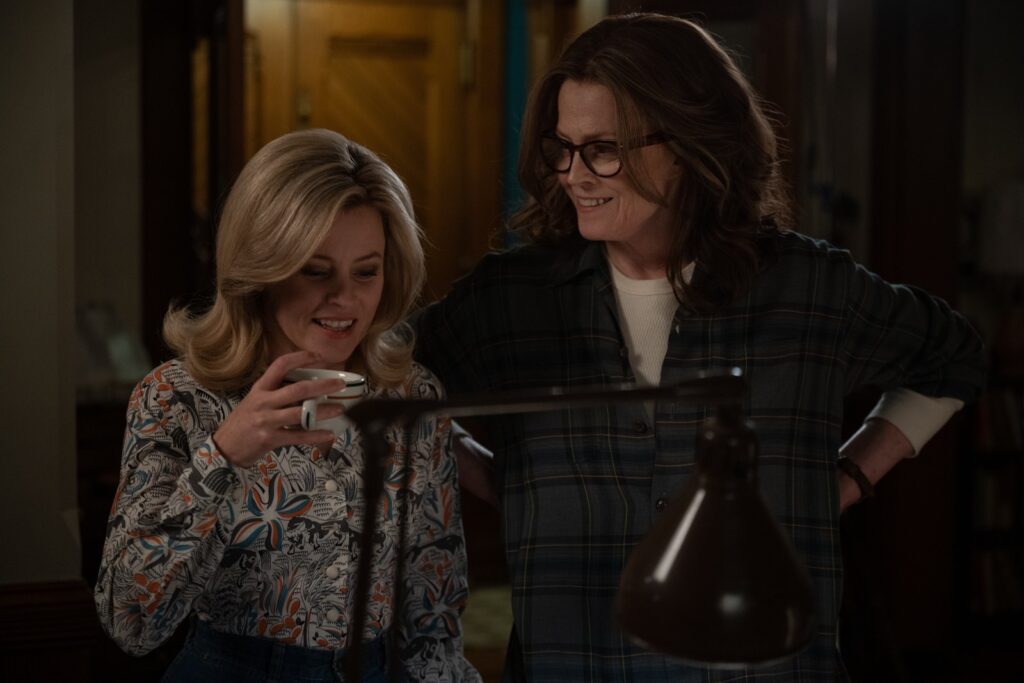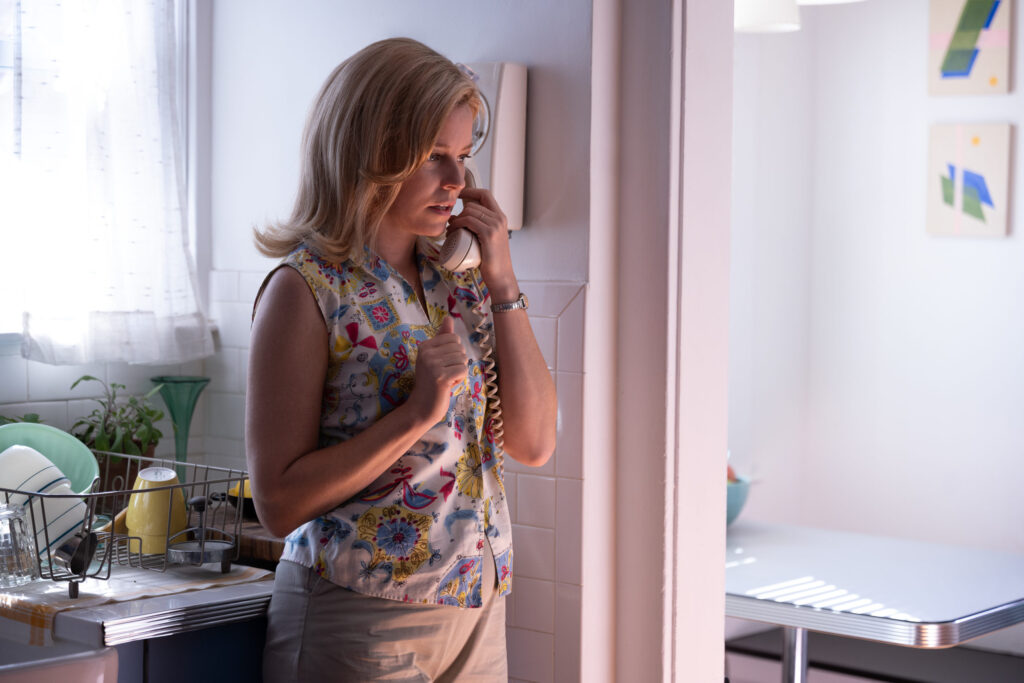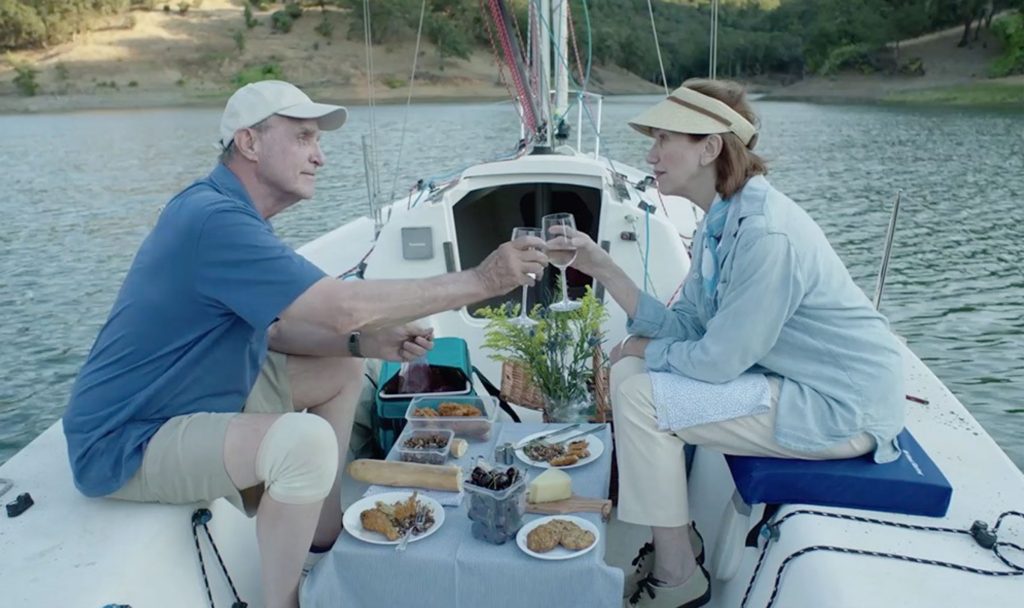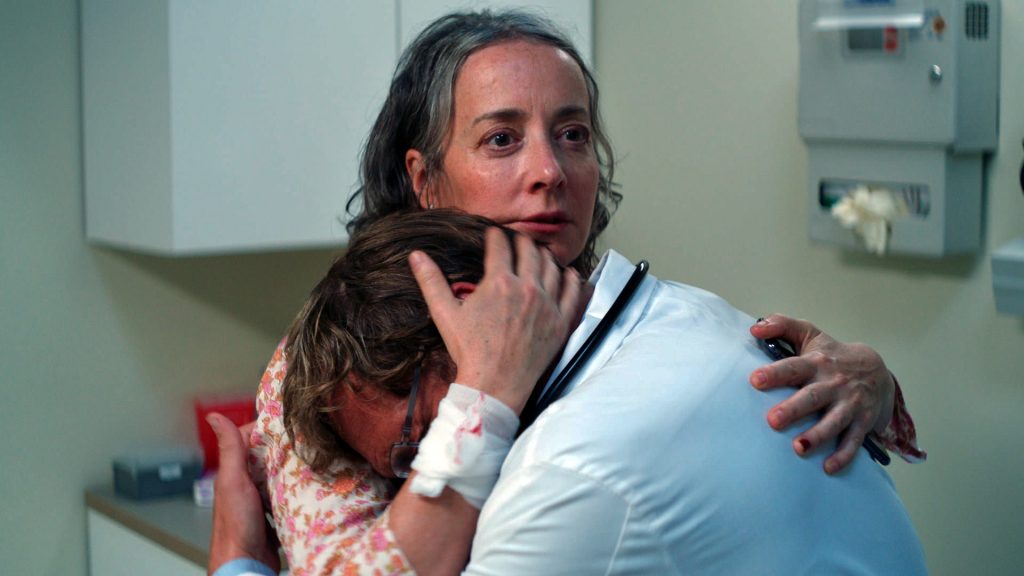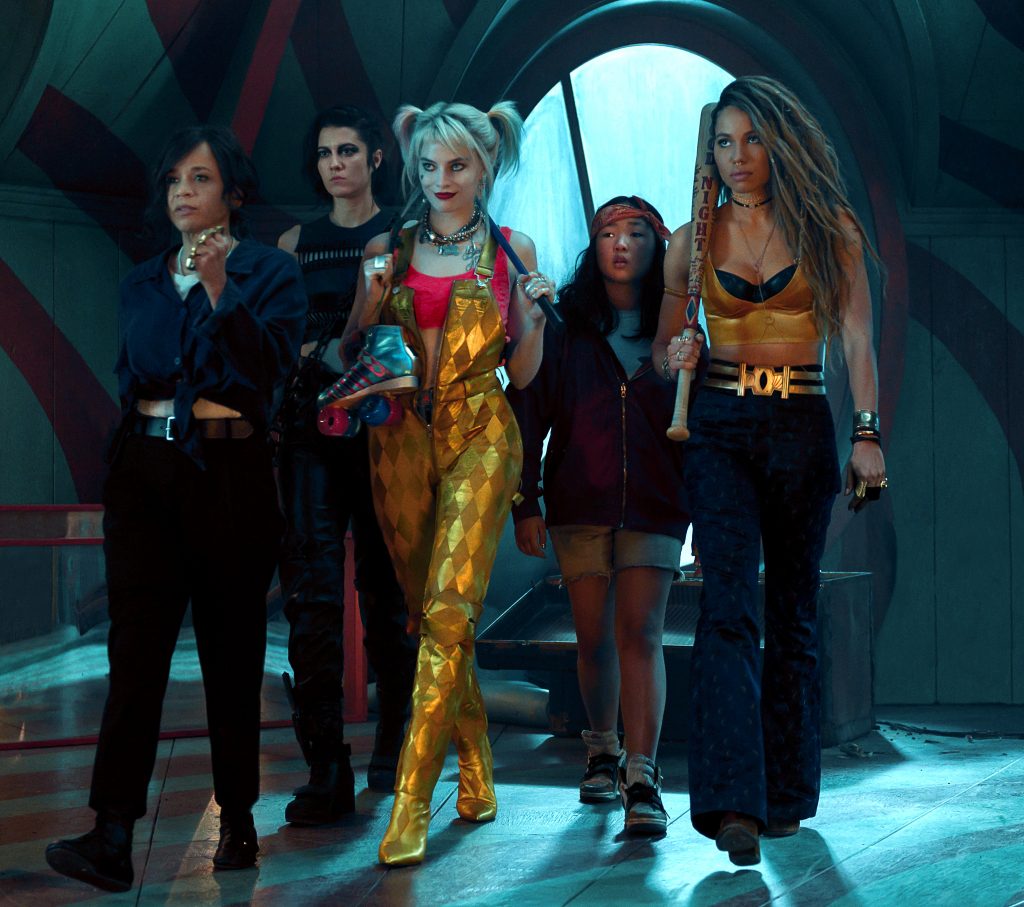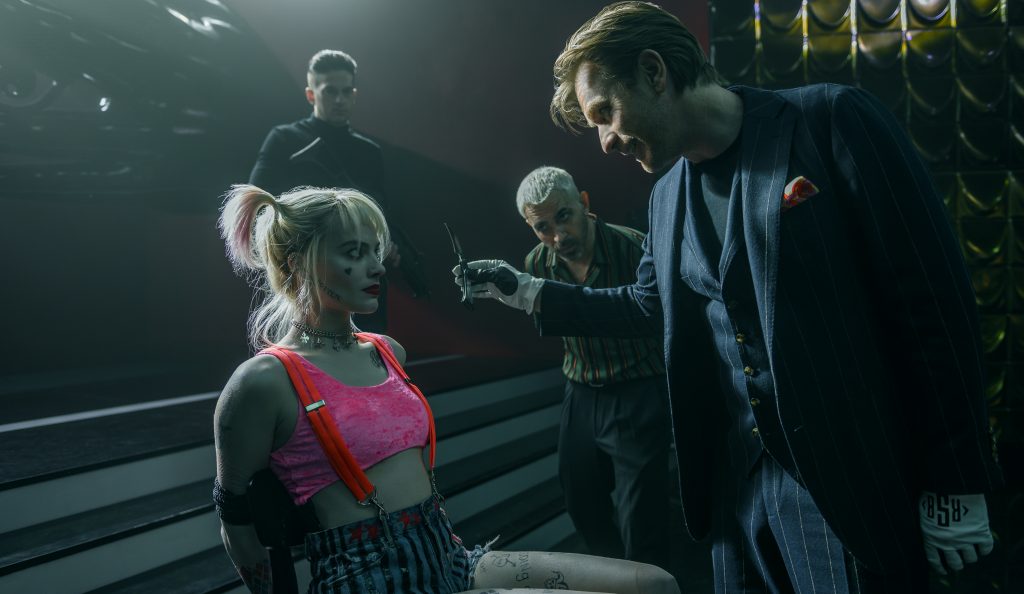January 21, 2024
by Carla Hay

Directed by Gabriela Cowperthwaite
Some language in Russian with subtitles
Culture Representation: Taking place in outer space, the sci-fi drama film “I.S.S.” features a predominantly white cast of characters (with one multiracial person) portraying astronauts from the United States and Russia.
Culture Clash: While on the International Space Station in outer space, three American astronauts and three Russian astronauts find out that an apocalyptic war is happening on Earth between the United States and Russia.
Culture Audience: “I.S.S.” will appeal primarily to people who are fans of star Ariana DeBose and sci-fi thrillers about astronauts dealing with a crisis in outer space.

With a low budget and a simple concept, “I.S.S.” has no aspirations to be a classic sci-fi thriller. After a slow start, “I.S.S.” gets more interesting when it’s about personal and national loyalty dilemmas among Russian and American astronauts stuck on a ship in outer space during an unexpected war between their respective nations. Because this is a science-fiction movie, some suspension of disbelief is required. There’s enough tension to keep viewers interested in seeing what will happen next, although the movie could have had a much stronger ending.
Directed by Gabriela Cowperthwaite and written by Nick Shafir, “I.S.S.” had its world premiere at the 2023 Tribeca Festival. “I.S.S.” is the feature-film debut for screenwriter Shafir, whose approach to this subject matter is very easy to understand but might be too trite for some viewers. The movie’s entire story takes place in outer space but was actually filmed in North Carolina. The year that the story takes place is not mentioned.
The title “I.S.S.” is an acronym for International Space Station. As explained in captions during the movie’s introduction: “The International Space Station (ISS) served as a symbol of the United States and Russian collaboration after the Cold War. The ISS is primarily used as a research facility, where the crew makes advancements in medicine, technology and space exploration. Today, both American astronauts and Russian cosmonauts are living on board the ISS.”
There are only six people in the movie’s entire cast of characters, who are evenly split among Americans and Russians. The Americans are commander Gordon Barrett (played by Chris Messina), emotionally reserved Kira Foster (played by Ariana DeBose) and talkative Christian Campbell (played by John Gallagher Jr.), who is a divorced father with two underage daughters. The Russians are efficient Alexey Pulov (played by Pilou Asbæk), his emotionally aloof brother Nicholai Pulov (played by Costa Ronin) and fun-loving Weronika Vetrov (played by Masha Mashkova), who sometimes goes by the nickname Nika.
Here’s where some suspension of disbelief is necessary for this movie: The first thing that some viewers might ask themselves is: “Why would Russia and the United States only have three astronauts each for such an important ISS mission?” The answer: “Because ‘I.S.S.’ is a low-budget movie.” The movie depicts all six of these space travelers as being confined to a certain part of the station, which is intended to make the movie’s interior settings look claustrophobic.
Kira is the story’s main protagonist. Kira and Alexey are both biological engineers working on a “top secret” project for their respective countries. They both share a workspace. Kira uses mice for her lab experiments. Observant viewers will notice how these mice are parallel symbols of what eventually happens to the humans in the story.
Near the beginning of the movie, Kira and Christian are by themselves, until the other four space travelers join them. Gordon introduces Alexey, Nicholai and Weronika to his colleagues. Everyone is friendly and in good spirits. The Russians begin playing the Scorpions’ 1990 hit song “Wind of Change” and begin singing along.
Alexey mentions how much an anthem the song is for Russians who were affected by the Cold War ending. However, all six of the space travelers agree that ISS is not the place where they want to talk about politics. All of this camaraderie and good cheer do not last when these ISS explorers find out something terrible: While looking down on Earth, they see large glowing spots, indicating that nuclear weapons have been detonated.
Soon after that, the ship loses all communication with Earth, except for some text messages that Gordon first sees on a computer screen in the station: “The ISS has been deemed a priority foothold. All U.S. citizens are to abort all order and experiments. You new objective is to take control of the ISS.” (This information was already revealed in the movie’s trailer.)
After some initial confusion, the Americans deduce that Russia must have attacked the United States, and an apocalyptic war is happening on Earth. Do the Russians on board the ship know this information? And will the Americans stay loyal to their Russian comrades on the ship, or will the Americans follow U.S. government orders and bring the apparent war inside the ship?
The answers to these questions are really what hold “I.S.S.” together, because most of the characters in the movie do not enough character development for viewers to feel like they really know these characters by the end of the movie. Very little is told the personal lives of these ISS travelers. The Russians in the movie have no backstories at all.
In a candid conversation with Gordon, Kira tells him the reason why she became a biological engineer. She says it’s because when she was a child, her terminally ill father died because he was on a waiting list for an organ transplant. Kira comments, “I made it my goal to find an easier way to manufacture what people needed.”
Kira also tells Gordon that she’s a lesbian or queer woman who wants to remain single and focused on work for now, because her ex-fiancée cheated on her and Kira is not ready to get in another love relationship. Later, it’s revealed that Gordon and Weronika have been having a flirtation or casual fling, which has no major bearing on the movie’s plot. As for Alexey and Nicholai, “I.S.S.” missed an opportunity to tell an interesting story about these two family members who are working together.
“I.S.S.” skimps on the details about what the personal stakes are for the people on the ISS to get back home safely to loved ones. However, the movie does reveal certain other information about why it’s very urgent for the ISS inhabitants to get back to Earth, against the odds and at great risk during the destruction that is happening on Earth. The question then becomes: “Who out of these six people will survive when they inevitably turn against each other?”
“I.S.S.” has competent acting for a story that occasionally stumbles with some of the science- fiction aspects that don’t always look convincing. The visual effects are solid, considering the movie’s low budget. There’s a predictability to some of the action scenes, but “I.S.S.” will keep viewers guessing (up until a certain point) about who on the ship is being honest and who is not. The movie’s ending won’t satisfy viewers who want clearly defined answers, but the ending is meant to show that there are no easy answers when it comes to human nature and being in outer space during an apocalyptic war on Earth.
Bleecker Street released “I.S.S.” in U.S. cinemas on January 19, 2024.





